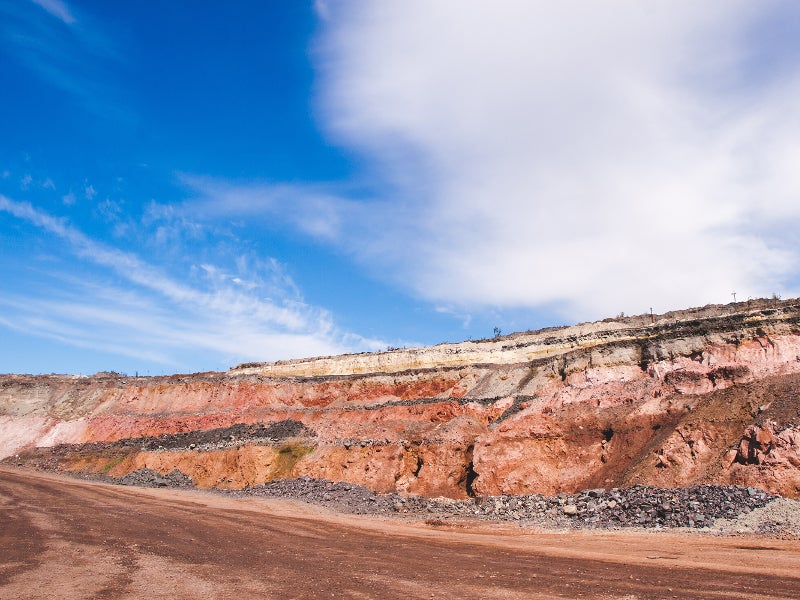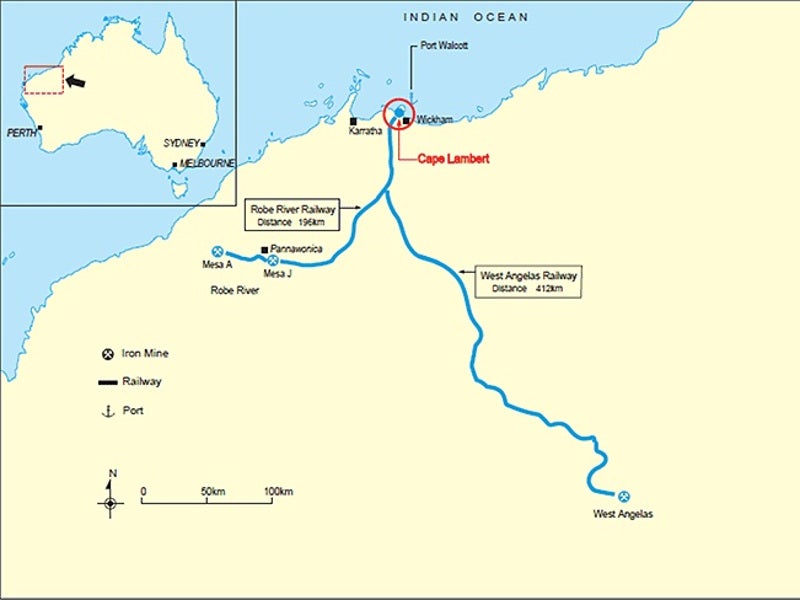Robe Valley is an open-pit iron ore mine located in the Robe valley area within the Pilbara region of Western Australia. Iron ore mining at Robe Valley traces back to 1972. The current Robe Valley mining operation is based on the Mesa A and Mesa J iron ore deposits, while a £743m ($967m) expansion project is underway to develop the Mesa B, C and H deposits.
The Robe Valley iron ore mine is owned by Robe River Iron Associates, a joint venture between operator Rio Tinto (53%), Mitsui (33%), Nippon Steel & Sumitomo Metal Corporation (NSSMC, 14%), that also owns the West Angelas open-pit iron ore mine in the Pilbara region.
Robe River joint venture partners approved $1.55bn (£1.19bn) investment, including £742m ($967m) for the Robe valley mine expansion and £444m ($579m) for the West Angelas mine expansion, in October 2018.
Key contracts for the Robe Valley iron ore mine expansion were awarded in 2019, while the construction works are expected to be started in 2020 with completion expected in 2021.
Robe Valley geology
The Robe valley geology is dominated by pisolite ore bodies in the form of Mesa deposits within the Hamersley Basin. Mesa deposits are broad flat-topped hills with deeply incised gullies bounded by 20-30m high cliffs.
The Hamersley Basin that overlies the Archaean Pilbara Craton consists of mafic and felsic volcanics, shale, siltstone, and sandstone, as well as dolomite and banded iron formation.
The Robe Valley Mesa ore bodies mostly comprise channel iron deposits (CID) that are iron-rich fluvial sedimentary deposits of the Miocene age.
Iron ore reserves at the Robe Valley mine
The Robe Valley mine was estimated to contain 370 million tonnes (Mt) of ore reserves as of December 2018.
The proven reserves were estimated to be 148Mt grading 56.6% Fe, while the probable reserves estimate stood at 222Mt grading 56.2% Fe.
Production from the Robe Valley iron ore mine
The Robe Valley mine produced 26.95Mt of iron ore from the Mesa A and Mesa J deposits in 2019 compared to 31.94Mt in 2018.
Mining, processing and ore transportation
Conventional open-pit mining involving a drill, blast, load and haul operations are employed to extract ore from Mesa A and Mesa J deposits.
The Mesa J deposit has approximately 42% of the ore body below the water table. Dewatering is done with the help of perimeter bores and pumps. The water from the mine dewatering is transferred to the downstream section of Robe River.
The extracted ore undergoes crushing and screening on the site, before being transported via an automated heavy-haul rail network to the Cape Lambert Port for shipping. The rail network, as well as the Cape Lambert port facility, is operated by Rio Tinto.
Infrastructure facilities
The 1,700km-long rail network that serves 16 Rio Tinto-operated mines in the Pilbara region was fully automated in 2019. Claimed to be the world’s first automated heavy-haul rail network, the AutoHaul system is capable of moving one million tonne of iron ore a day.
Rio Tinto also operates four power plants namely Paraburdoo, Yurralyi Maya, West Angelas and Cape Lambert, and four independent shipping terminals at Cape Lambert and Dampier for its Pilbara iron ore operations.
The entire loading and hauling processes at Rio Tinto’s Pilbara mines are monitored and remote-controlled from its operations centre in Perth.
Robe Valley iron ore mine expansion
The Robe Valley iron ore mine expansion, also known as the Robe Valley sustaining project, involves the development of three open-pits on three new deposits namely Mesa B, Mesa C, and Mesa H, as well as the construction of supporting infrastructure for continued operations at Mesa A and Mesa J.
The three new open-pit mines will utilise existing infrastructure facilities including the rail network, port facilities, and the power stations.
The project also involves the construction of new haul roads, a wet processing facility, a waste fines storage facility, apart from the extension of existing water supply and communications infrastructure.
Contractors involved with the Robe Valley sustaining project
CPB Contractors, a subsidiary of Australia-based CIMIC Group, was awarded a £115m ($150m) contract for various earthworks and civil works for the development of Mesa B, Mesa C, and Mesa H mines as part of the Robe Valley expansion project in December 2019.
CAPE, a mining and utilities services company based in Australia, was contracted for the relocation and modifications to existing electrical and raw water services, as well as for the installation of communication infrastructure and waste fines pipelines for the expansion project in October 2019.
Calibre Group, a construction and maintenance service company based in Australia, was selected as the engineering, procurement, and construction management (EPCM) contractor for the Robe Valley sustaining project in April 2019.
Calibre had also delivered the pre-feasibility and feasibility studies for the Robe Valley mine expansion project.





